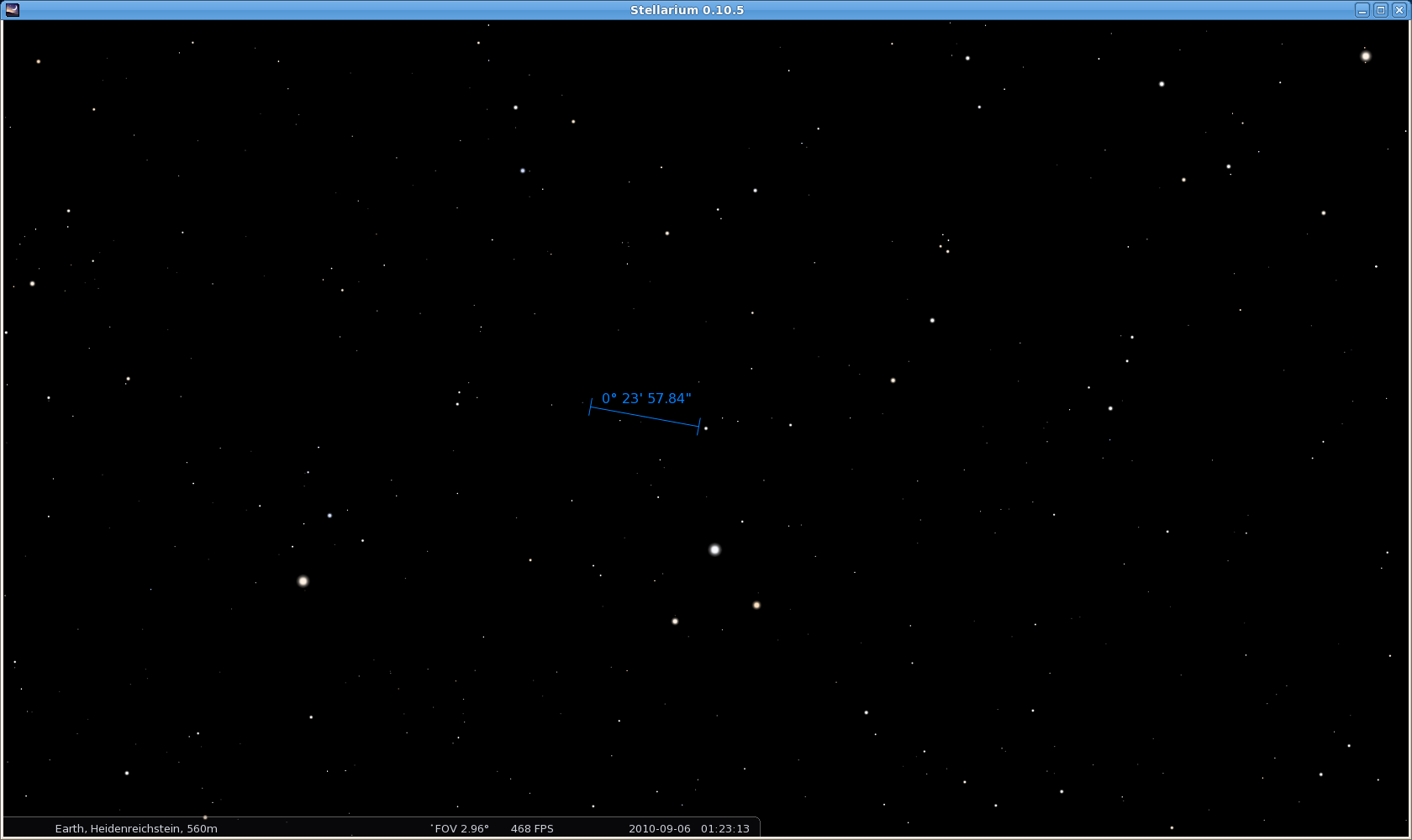Today was not a perfectly clear night, but good enough for some observations. Recently I found that the asteroid 6 Hebe is approaching opposition and therefor makes a good observation target, so I tried my luck finding it.
The source which I used was http://www.heavens-above.com/MinorPlanet.aspx?desig=6. The position where 6 Hebe was specified to be was RA 0h 30.6m, DE -14° 25′ (J2000). I fired up Stellarium (of all astronomical software that I know, Stellarium resembles what one can really see through binoculars or scopes the best), looked up this position, tried to find a path how to find this position (the star Diphda was a great starting point, it was easy to hop to 6 Hebe’s position from there), and searched this spot with my binoculars. Thanks to Diphda it didn’t take me long to find it.
But whoops, where I expected to find 6 Hebe, there was nothing. Instead, just a little bit further to the left there was an object just as bright as 6 Hebe was supposed to be, and according to Stellarium, there was no star of this brightness at this place. So was this 6 Hebe? I pretty much thought this has to be 6 Hebe, but it was basically just a guess, I had no evidence to support this.
What could I do to know for sure (or at least as sure as I can be)? I remembered NASA’s HORIZONS Web-Interface which allows to track basically every solar system object which is known. There I found that its supposed position is RA 0h 31.47, DE -14° 21′ 11.8″ (J2000). I checked this spot in Stellarium, and voilà – that was exactly where I saw the object which I thought must be 6 Hebe. Evidence enough to confirm.
See this Stellarium screenshot to see the discrepancy:
On the right end of the blue bar is the spot where I expected 6 Hebe to be, on the left is the spot where I actually found it. So the discrepancy is around 20-25 arc minutes, or ~ 2/3 of the diameter of the Moon.

